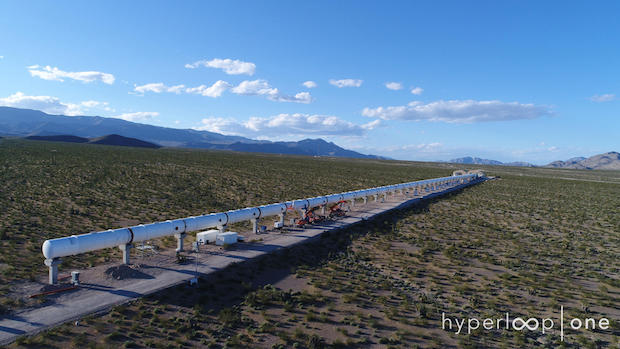
July 13, 2017
Hyperloop One announced the successful completion of a full systems Hyperloop test in a vacuum environment, according to the company. This test was Phase 1 of a multiphase program and was privately conducted in May of this year at the company’s test track, “DevLoop,” in the Nevada Desert. The vehicle coasted above the first portion of the track for 5.3 seconds using magnetic levitation and reached nearly 2Gs of acceleration, while achieving the Phase 1 target speed of 70mph, the company reports. The company says it is now entering the next campaign of testing, which will target speeds of 250 mph.

Hyperloop One tested all the system’s components, including its motor, vehicle suspension, magnetic levitation, electromagnetic braking, vacuum pumping system and more, establishing that the full system’s components operate successfully as a single integrated unit in a vacuum, the company says. Nearly 200 engineers, fabricators, welders, etc. dedicated thousands of hours to make this test successful, the company adds.
In addition to announcing the private test, Hyperloop One also unveiled the prototype of its Pod that will work within the integrated system. Using electromagnetic propulsion and magnetic levitation, the Pod will transport passengers and cargo inside the tube. Hyperloop One’s Pod is a vehicle that, with the company’s linear electric motor, achieves autonomous high-speed propulsion and levitation in a controlled low-pressure environment. Made of structural aluminum and a lightweight carbon fiber, the shell measures 28 feet long.
Hyperloop One will continue to run tests at DevLoop in the coming months to validate its components and software. The next phase of testing will involve the Pod gliding along a longer track at faster speeds, the company reports.
For more info, visit Hyperloop One.
Sources: Press materials received from the company.
Subscribe to our FREE magazine, FREE email newsletters or both!





